Artificial Intelligence (AI) is powering many innovative technologies around us. It is making our life comfortable.
Do you know not all AI systems are alike?
Some are designed to perform a simple task (Alexa), while others are used to perform a more complex task(Self-driving cars)
Let’s discover the various types of AI in the following sections.
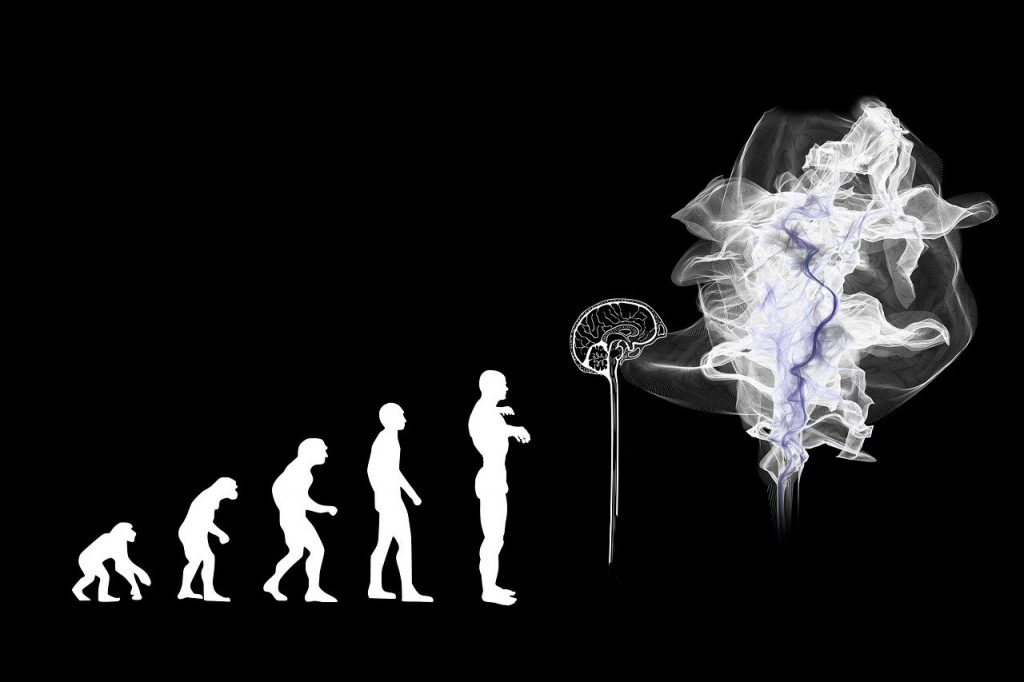
How Many Types Of AI Systems Are There?
There are 4 major types of AI systems that are listed down below:
1. Reactive Machine AI
This is the most simple type of Artificial intelligence system. It is the first stage of any Artificial Intelligence system. It perceives things directly and acts on what it sees. It reacts to some input with the desired output. This type of AI stores no inputs and performs no learning. All the static machine learning models are reactive machines. It does not possess the ability to form any kind of memories nor has the capability to use past experiences to make better decisions. These reactive machines do not have memory-based functionality.
For example, IBM’s Chess-playing supercomputer
IBM’s Chess-playing supercomputer- Deep Blue
The famous IBM’s Chess-playing supercomputer Deep Blue attracted attention when it defeated the grandmaster Garry Kasparov in 1997. This computer moved the chess pieces based upon its real-time intuition and it won the game.
2. Limited Memory
This type of AI system possesses the ability to store learning data, and it improves over time based on its previous data. It uses that dataset in order to make better decisions or predictions. Let’s understand it better with the following examples.
1. Image Recognition AI uses Limited Memory AI
An image recognition AI is trained by various datasets in such a way that they will have the ability to identify Cat and Dog from the picture.
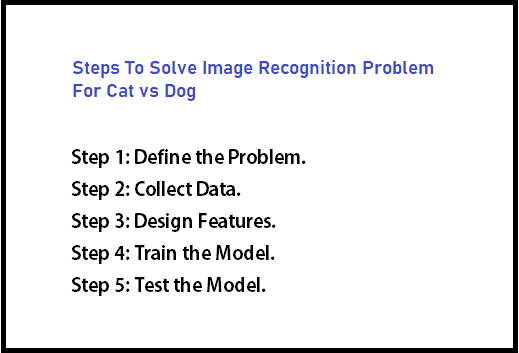
As per the image, first, we will follow the procedure step-by-step process:
Step-1: Define the Problem
We need to distinguish Cat from a Dog. We will design an AI system that will recognize whether the animal is a Cat or a Dog.
Step-2: Collect Data
In this step, we will make two labels: Cat label & Dog label
In the Cat label, we will add various images of cats, and dog label we will add various images of dogs. In this way, the AI system will be trained to recognize the difference between these two animals by learning from various examples that we have supplied to it in labels.
As shown in the image given down below:
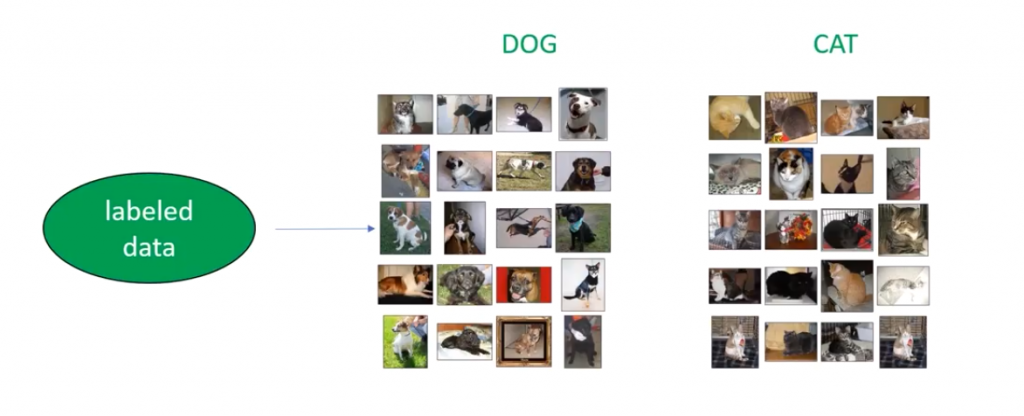
Step -3: Design Features
Then we will train the AI system to distinguish both animals based on distinguishing features like:
- Size of the nose
- Shape of ears
All cats have small noses and pointy ears, whereas all dogs have big noses and round ears. These differences will help the AI systems to distinguish between the two animals.
Step -4: Training the Model
In this step, we will train the model based on the differences in their features as shown in the image.
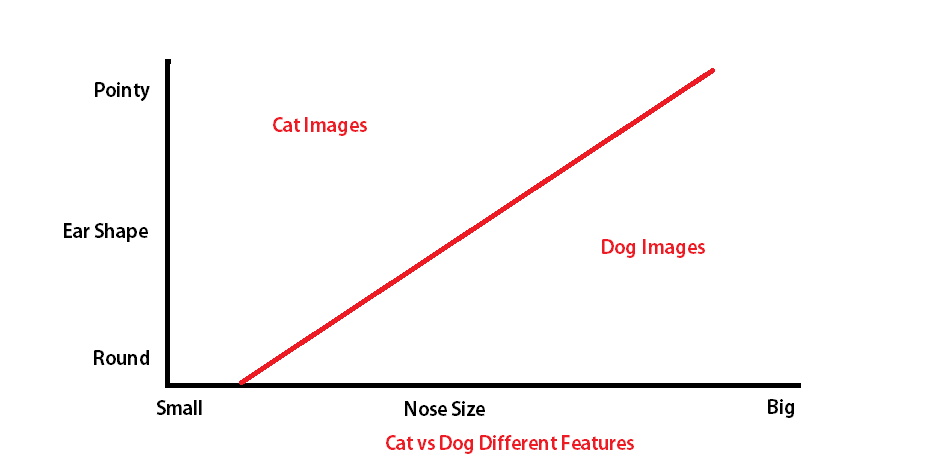
In the image above, a trained linear model(depicted by a red line) separates the two labels of animals that are present in the training set.
If we add any new image in the AI system it will be classified as a cat if its design feature representation lies above the red line and a dog if its design feature representation lies below the red line.
Step 5: Test the Model
This system is trained by two labels- Cat label & Dog label.
In both of these labels, the images of various breeds of cats and dogs are stored in the memory of the system individually.
In the cat label, the various breeds of cat images are stored whereas in the dog label the various breeds of dog images are stored.
When both the labels are trained, in the testing stage when someone shows a picture of a German Shepard Dog the image recognition system identifies this image. Based on the previously trained datasets, it displays the output “Dog” with 100% confidence if the German Shepherd image is used in the dataset of the Dog label.
To gain more knowledge about Artificial Intelligence and Machine Learning, don’t forget to Join Tinkerly’s STEM Learning & Coding course which is blended with the goodness of interactive STEM learning toys.
3. Theory of Mind
This is an advanced type of AI technology that requires a thorough understanding of people’s behavior and feelings within an environment. It only exists as a concept currently that sorts people’s emotions, sentiments, and thoughts. In this advanced form of AI technology, the system interacts with the emotions, sentiments, and thoughts of human beings. This is a type of 2-way relationship with AI. In the current AI technology stage, we use only a one-way relationship with AI.
Let’s consider this example to understand the theory of mind.
Suppose you are lost in a new city or town and looking for a place nearby on Google maps. You didn’t find the place and in frustration, you shout at Google Maps and asks it to tell you another way. Now let’s assume that Google map gets so advanced that it uses this theory of mind AI technology then it will be able to detect your emotional state from the distress in your voice. It will offer emotional support to you and play some music by interacting with some other app to lighten your mood.
Although this advanced type of theory of the mind-based AI system has not been fully developed, we have two systems that are close to this system.
A. Kismet Robot(2000)
This robot was designed in the late 1990s and it possesses the power to mimic human emotions. It has the ability to recognize and replicate them using facial expressions such as eyes, eyebrows, lips, and ears, jaw, and head. It contains various input devices that power its visual, auditory, and proprioception abilities.
B. Sophia (2016)
It is a social humanoid robot developed by Hong Kong-based company Hanson Robotics that possesses the ability to “see” emotions and it responds to them as required. This humanoid robot has in-built cameras within Sophia’s eyes which in combination with computer algorithms allows it to see. Sophie robot has the ability to follow faces, maintain eye contact, and possesses the ability to recognize individuals.
You will be surprised to know that it has the ability to process speech and it can make conversations using a natural language subsystem. In January 2018, the Sophia robot was upgraded with functional legs and the ability to walk was also added into it. It also has the ability to emulate more than 60 facial expressions.
4. Self -Aware AI
This is a more advanced type of AI. This type of machine not only has the capability to be aware of human emotions and thoughts but also they are aware of their own emotions and thoughts as well. This type of AI system is still a concept and is not fully developed. A self-aware AI will have independent intelligence.
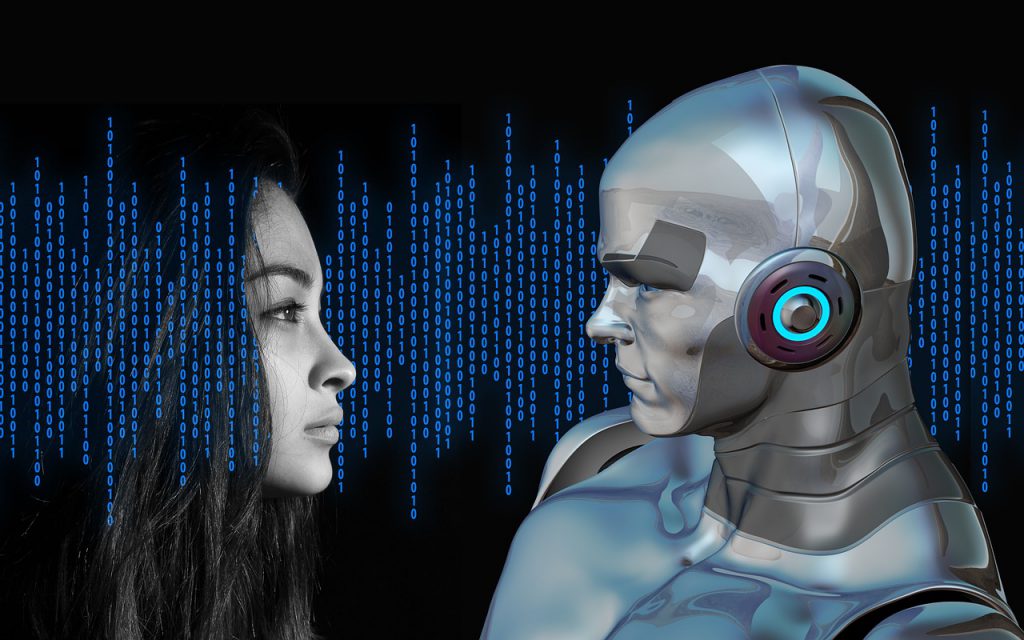
This type of self-aware Ai is a subject of many science fiction movies. These self-aware AI robots can think on their own and it will be equal to human intelligence with the same needs, desires, and emotions.
Conclusion
In a nutshell, AI is a rapidly growing field that will open up many job opportunities for the future. It is high time that kids will start learning this technology from an early age so that they will be able to secure a good future job opportunity in the field of AI.
Stay tuned with us & subscribe to our blog. Be the first one to receive a notification whenever we publish our brand new blog!
 1380
1380




